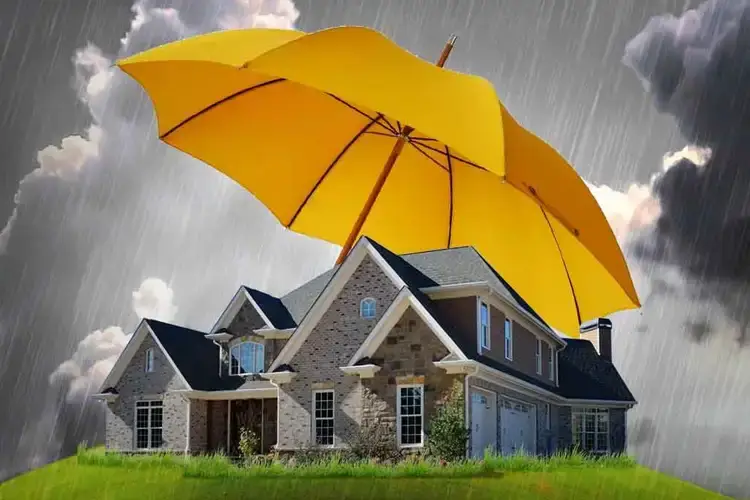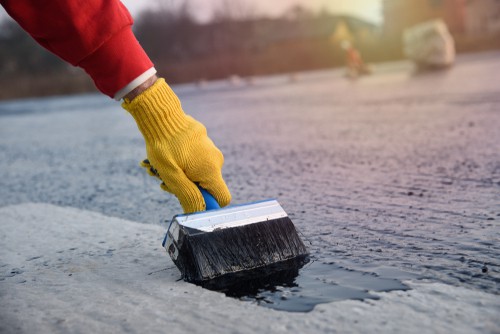The Role of Sump pump discharge drainage Omaha in Preventing Floods
Wiki Article
Exactly How Waterproofing Works: A Comprehensive Consider Strategies and Technologies
Waterproofing is essential for safeguarding structures from moisture-related damage. It entails numerous techniques and technologies that produce obstacles versus water breach. Typical approaches, such as compressed clay, exist side-by-side with modern-day innovations like liquid-applied membrane layers. Recognizing the nuances of these strategies is essential for reliable application. The performance of any waterproofing remedy hinges not just on the strategies utilized but also on recurring upkeep and evaluation. What are the crucial variables that affect lasting efficiency?Recognizing the Basics of Waterproofing
Waterproofing is an essential process that protects frameworks from water breach, which can result in significant damage with time. This technique entails the application of numerous products and methods made to produce an obstacle against moisture. The key objective is to avoid water from penetrating surface areas, which can cause damage, mold and mildew development, and architectural instability.Various variables influence the option of waterproofing approach, including the kind of structure, its location, and ecological conditions. Recognizing the physics of water movement and the residential or commercial properties of various materials is essential in picking a reliable waterproofing solution.Effective waterproofing not just safeguards structures but additionally enhances their longevity and stability. Generally, it is incorporated right into the style phase of building to assure extensive defense. As awareness of water-related problems expands, the importance of comprehending waterproofing basics ends up being progressively clear to architects, contractors, and homeowner alike.Traditional Waterproofing Approaches
Standard waterproofing techniques have been used for centuries, counting on tried and true techniques and materials to safeguard structures from water damage. Among the oldest methods involves making use of clay, which, when compressed, creates an all-natural barrier versus dampness. Additionally, bitumen, a sticky, black material derived from petroleum, has been employed for its waterproof residential properties, usually put on roofs and foundations.Another technique involves the application of lime-based plasters, which supply a breathable layer that permits moisture to escape while stopping water ingress. Thatch roof covering, a traditional approach still seen in some societies, provides excellent waterproofing due to its snugly packed straw layers.Moreover, the usage of rock and brick has projected, as these products are naturally resistant to water when correctly mounted. In general, conventional waterproofing methods emphasize the significance of picking proper materials and construction techniques to boost durability versus water invasion.Modern Waterproofing Technologies
Developments in modern waterproofing modern technologies have changed the means frameworks are safeguarded from water damages. Ingenious approaches such as liquid-applied membrane layers and innovative sealants have enhanced the performance and versatility of waterproofing options. These modern technologies enable smooth application, decreasing the threat of leakages and ensuring thorough protection over complicated surfaces.Moreover, the combination of clever modern technologies, such as moisture sensors and automated surveillance systems, enables real-time evaluation of waterproofing efficiency. This aggressive technique assists in timely upkeep and decreases long-lasting fixing costs.Additionally, innovations in spray-applied coverings use fast application and excellent adhesion, adjusting to numerous substrates while offering durable security. Methods like polymer-modified systems even more enhance adaptability and longevity, making them appropriate for varied atmospheres. Overall, contemporary waterproofing innovations not just mitigate water breach but also add to the durability and sustainability of structures, marking a significant change in the market.Materials Made Use Of in Waterproofing
The performance of waterproofing services heavily relies upon the products utilized in their application. Numerous products are employed to create obstacles against water ingress, each with special properties suited for various settings. Commonly used products consist of membranes, finishings, and sealants.Liquid-applied membranes, typically made from polyurethane or acrylic, form a smooth barrier that adjusts to intricate surface areas. Sheet membranes, generally built from rubber or thermoplastic, offer durability and are optimal for larger areas. Furthermore, cementitious waterproofing materials, composed of cementitious compounds, offer superb adhesion and flexibility.Sealants made from silicone or polyurethane are crucial for joints and seams, making certain extensive defense. Innovative materials, such as see this site geo-composite membrane layers, integrate multiple features, improving performance. On the whole, the selection of waterproofing products is important in accomplishing lasting and reliable water resistance, tailored to specific job requirements and environmental problems.
Common Applications of Waterproofing
Waterproofing plays a crucial role in various industries, making sure the long life and integrity of frameworks. Typical applications consist of property remedies that shield homes, industrial facilities that safeguards services, and commercial settings that call for robust defense against wetness. Recognizing these applications highlights the significance of waterproofing in preserving both safety and functionality across different settings.Residential Waterproofing Solutions
Many house owners deal with obstacles with dampness breach, making efficient domestic waterproofing solutions important. Different techniques exist to address this concern, consisting of inside and exterior waterproofing systems. Interior solutions typically entail the application of sealants and coverings to basement walls, which assist stop water infiltration. Exterior methods normally consist of the installment of water drainage systems and water-proof membrane layers that draw away water away from the foundation.Additionally, homeowners might consider sump pumps to eliminate water build-up and dehumidifiers to regulate moisture levels. Correct grading and making use of seamless gutters additionally play an important function in managing water circulation around the home. By carrying out these strategies, homeowners can substantially decrease the threat of water damage and mold development, ensuring a completely dry and risk-free living environment.
Industrial Framework Protection
Efficient waterproofing remedies play a crucial function in the security of business facilities. French drain installation Omaha. These techniques are important for securing structures, car park frameworks, and bridges from water damages, which can endanger architectural stability and lead to costly repair services. Usual applications consist of the installation of membrane layers, finishings, and sealers that create obstacles against wetness infiltration. Areas such as basements, roofing systems, and exterior walls are typically prioritized to guarantee longevity and sturdiness. Furthermore, waterproofing systems can enhance energy efficiency by avoiding water-related issues that may bring about mold and mildew development and wear and tear. By executing robust waterproofing steps, residential property proprietors can safeguard their investments and keep functional effectiveness, inevitably adding to the overall sustainability of industrial centersIndustrial Applications Introduction
While numerous markets face distinct obstacles, the need for trustworthy waterproofing remedies remains a consistent in commercial applications. Industries such as production, construction, and energy usually run into environments where moisture exposure can jeopardize structural integrity and operational efficiency. In manufacturing centers, xypex crystalline waterproofing waterproofing is essential for safeguarding machinery and materials from water damages. In building and construction, it safeguards structures and cellars versus groundwater infiltration. The energy market depends on waterproofing for the protection of equipment in hydroelectric plants and offshore frameworks. In addition, food handling markets utilize waterproofing to guarantee hdpe waterproofing hygiene and compliance with safety requirements. In general, efficient waterproofing options are essential for enhancing sturdiness, security, and performance across various commercial setups.
Maintenance and Long Life of Waterproofing Solutions
Although waterproofing services are developed to use long-term protection against moisture invasion, routine maintenance is important to assure their efficiency and longevity - Yard drainage Omaha. Routine inspections play a considerable function in identifying prospective concerns such as fractures, peeling, or indicators of water damage. Resolving these issues promptly can stop additional wear and tear and pricey repairs.Additionally, cleaning up the surface area of waterproofed locations helps get rid of dust and debris that can compromise the stability of the waterproofing obstacle. It's also recommended to reapply safety finishings or sealants as advised by producers to keep perfect efficiency. Ecological elements, such as UV direct exposure and severe climate conditions, can influence the lifespan of waterproofing products, making normal analysis crucialOften Asked Questions
Can Waterproofing Be Applied in Winter?
The inquiry of using waterproofing in chilly weather increases problems about bond and treating. Numerous products may not perform at their ideal in low temperatures, demanding mindful selection and consideration of certain guidelines for efficient application.How Much Time Does Waterproofing Generally Last?
The duration of waterproofing effectiveness varies based on materials and ecological variables. Generally, it can last from five to 10 years, but normal maintenance and examinations are necessary to ensure peak performance and longevity.Is DIY Waterproofing Effective and Safe?
The effectiveness and safety of DIY waterproofing depend upon different aspects, including material top quality and application method. While some people attain satisfying results, others may encounter issues that endanger lasting security and structural integrity.What Are the Indicators of Failing Waterproofing?
Indicators of stopping working waterproofing include visible water discolorations, peeling paint, mold development, stuffy smells, and wetness in wall surfaces or ceilings - Sump pump discharge drainage Omaha. These signs suggest endangered barriers, demanding prompt examination and prospective remediation to stop additional damagesHow Do I Pick the Right Waterproofing Professional?

Report this wiki page